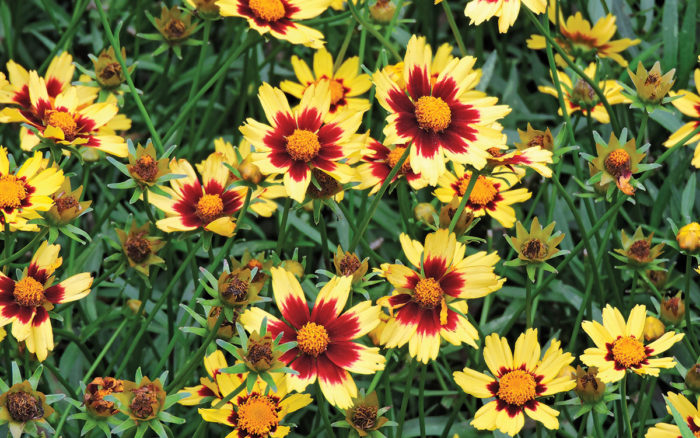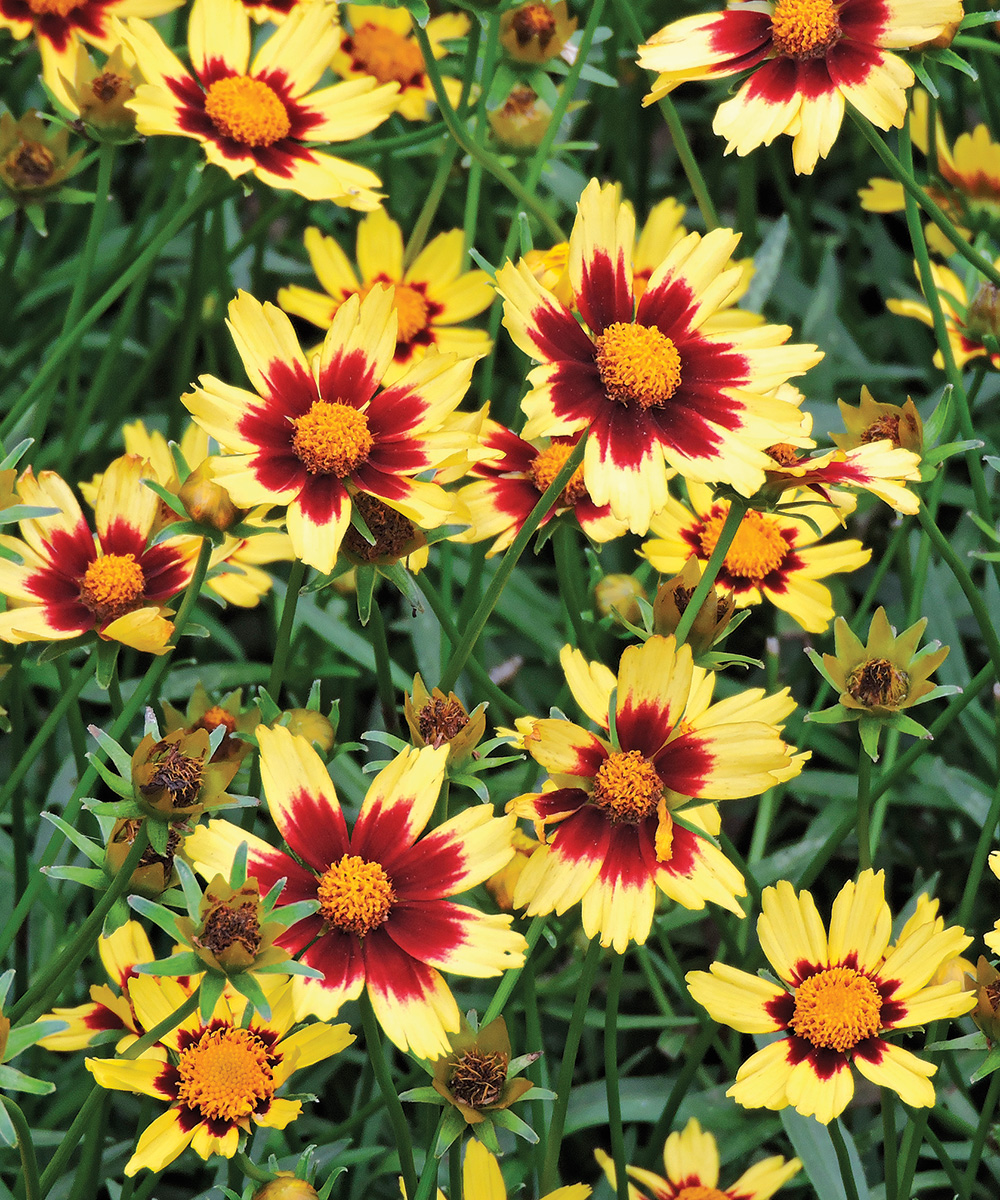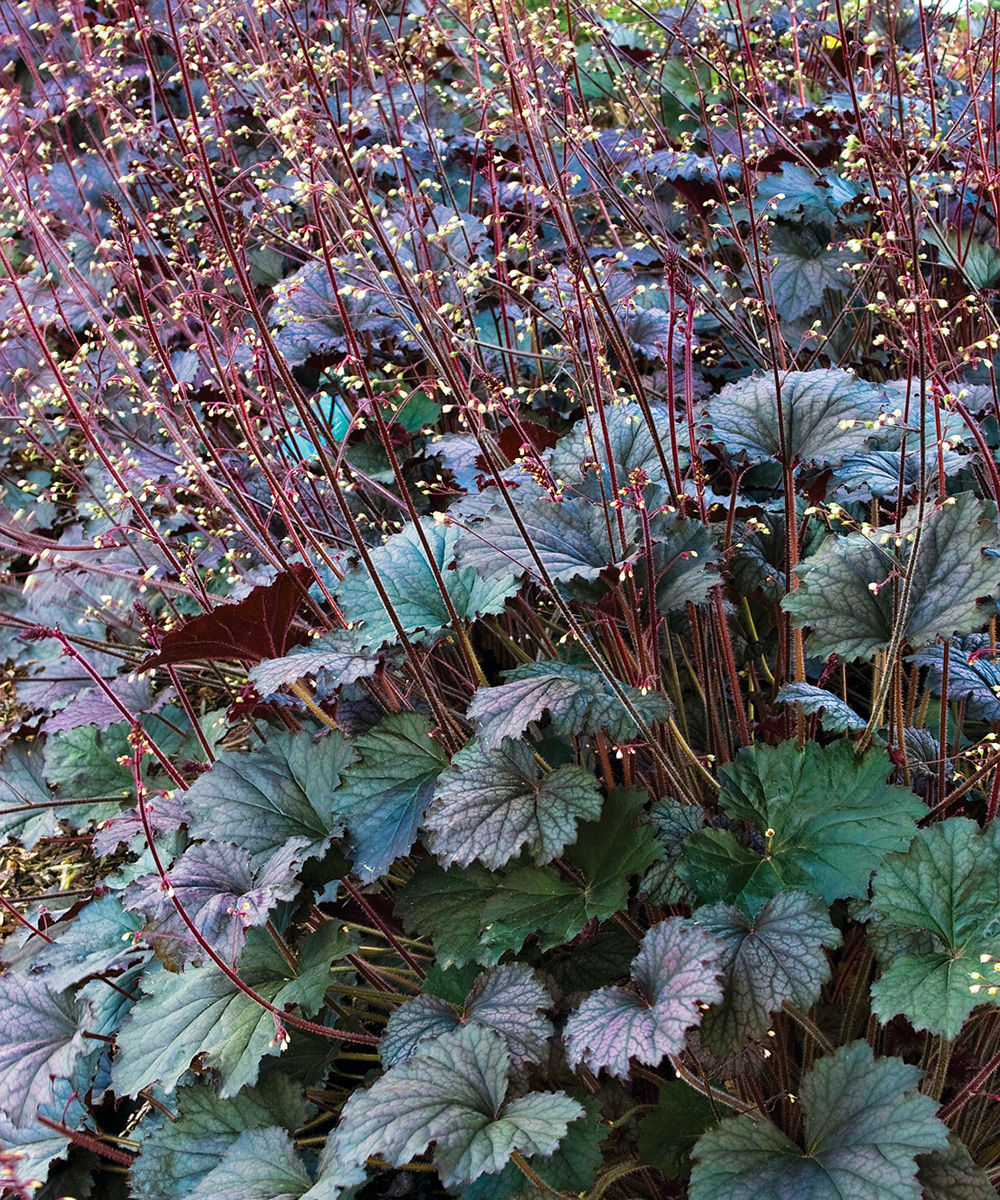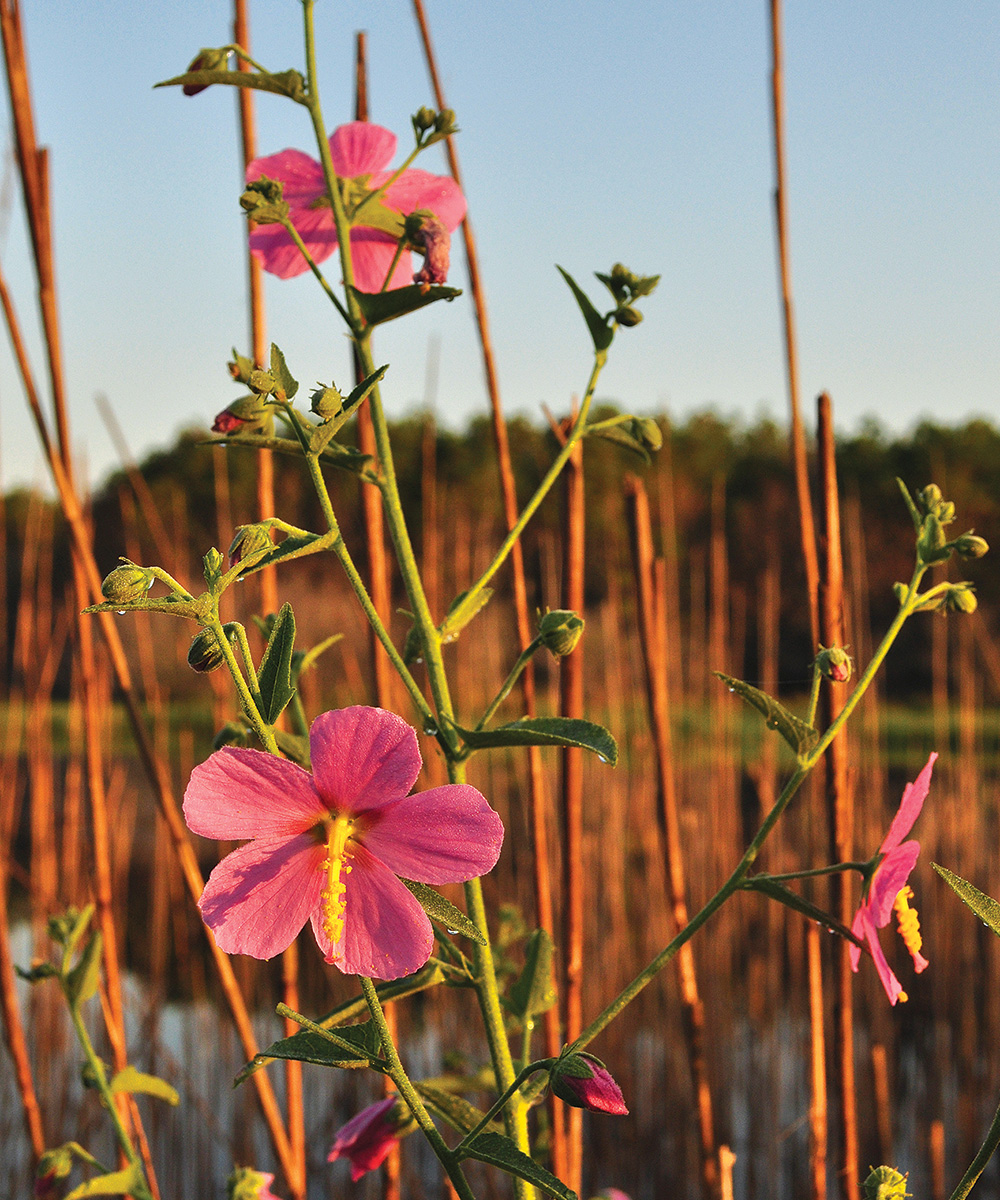
Incorporating native plants into your landscape design is an easy way to help support your local wildlife. Native plants support native insects. If we keep our native insect populations healthy and thriving, it helps support native birds, who eat the insects as a food source. The chain of positive impacts that planting native plants provokes stretches throughout the food chain of organisms and can even help ward off potential threats such as blights or pest outbreaks.
Below, you’ll find some of the best native plants for the Southeast.
1. ‘Purple Smoke’ Wild Indigo

Name: Baptisia ‘Purple Smoke’
USDA Hardiness Zones: 4 to 9
Size: 3 to 4 feet tall and wide
Conditions: Full sun; lean to average well-drained soil
Dark charcoal stems and gray-green foliage, typical of white wild indigo (Baptisia alba, Zones 5–8), are topped with enchanting, lupinelike flowers that are smoky violet with a purple eye. Numerous flowers first open low on the bloom spike and ascend, with the flower stalk topping out at 4 feet tall. Mature plants three to four years old can bear more than 50 blooming stalks in springtime gardens. This exciting, naturally occurring hybrid of white wild indigo and blue wild indigo (B. australis, Zones 3–9) offers the best of both species and was found, watched over, and nurtured by Rob Gardner, former curator of the North Carolina Botanical Garden.
2. ‘Cosmic Eye’ Coreopsis

Name: Coreopsis ‘Cosmic Eye’
Zones: 5 to 9
Size: 24 to 30 inches tall and wide
Conditions: Full sun; well-drained soil
Darrell Probst, renowned for his work with epimediums (Epimedium spp. and cvs, Zones 5–8), has turned his attention to Coreopsis, with predictably stunning results. ‘Cosmic Eye’ is one of the Big Bang™ series, sporting daisylike bicolored flowers of burgundy with golden yellow tips. This fairly compact coreopsis blooms from midsummer into fall and is suitable for containers or the front of the border. Bred for colder climates, it is reliably hardy in Zone 5 and, perhaps, Zone 4 with careful placement. Keep it deadheaded for an even longer bloom time.
3. ‘Frosted Violet’ Coral Bells

Name: Heuchera ‘Frosted Violet’
Zones: 4 to 8
Size: 12 to 18 inches tall and 2 feet wide
Conditions: Partial to full shade; average soil
This outstanding cultivar brings an elegant presence to the shade. The leaves have purple, silver, and dark green tones that blend to create a rich mix that changes its color balance through the season. In early summer, flower spikes up to 30 inches tall are topped with tiny rose-pink blooms. This hybrid has substantial Heuchera villosa parentage, so it is well adapted to the hot, moist southeastern climate. Shade and drought tolerant, it is ideally suited for a woodland garden.
4. Seashore Mallow

Name: Kosteletzkya virginica
Zones: 6 to 9
Size: 5 to 6 feet tall and 3 to 4 feet wide
Conditions: Full sun; moist to average soil
Pale pink 3-inch hibiscuslike flowers appear from late summer through fall on 5- to 6-foot stems. Typical of all hibiscus, the flowers open daily then close, with a fresh crop of blooms appearing the next day. Seashore mallow is suited to full sun or a half-day of afternoon sun. Native to salt and brackish marshes, swamps, and other wet areas along the east and gulf coasts, this plant appreciates supplemental irrigation during drought. It is beautiful in the middle or rear of the border.
Blair Durant owns Niche Gardens, a nursery specializing in native plants in Chapel Hill, North Carolina.
Fine Gardening Recommended Products

Planting in a Post-Wild World: Designing Plant Communities for Resilient Landscapes
Fine Gardening receives a commission for items purchased through links on this site, including Amazon Associates and other affiliate advertising programs.

The Nature of Oaks: The Rich Ecology of Our Most Essential Native Trees
Fine Gardening receives a commission for items purchased through links on this site, including Amazon Associates and other affiliate advertising programs.


















Comments
Log in or create an account to post a comment.
Sign up Log in